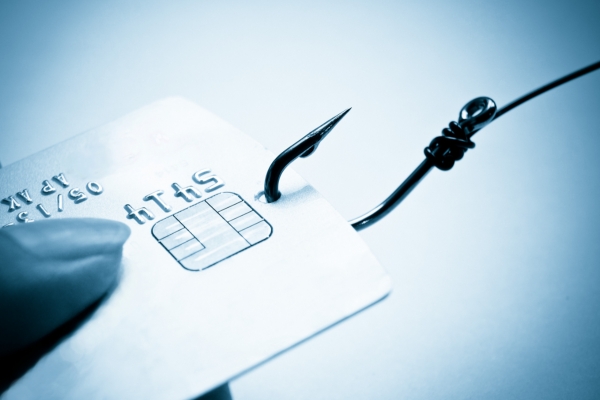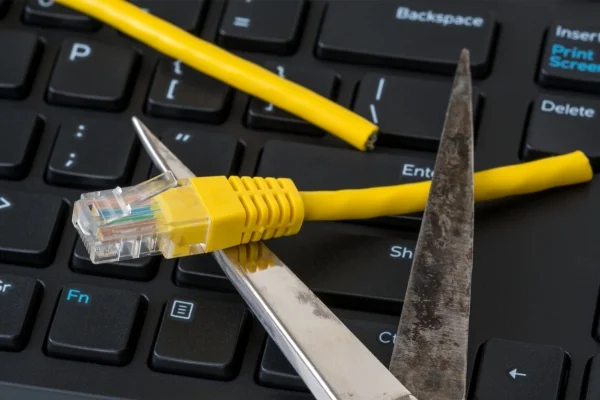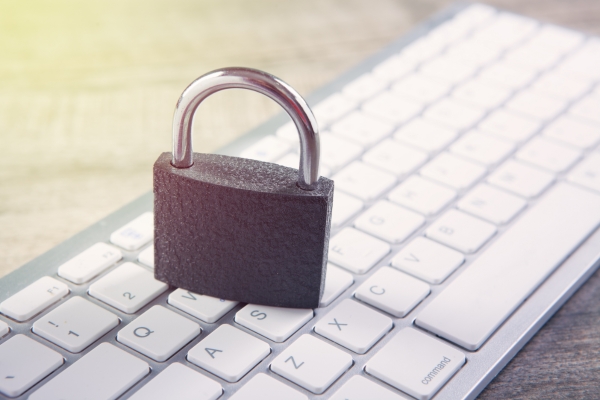What to do if I clicked on a phishing link?
Phishing is a technique of online fraud through which cybercriminals send you messages pretending to be trustworthy entities in order to access your personal data.
Hence, it’s vital to stay extra attentive and learn how to shield yourself to prevent your most precious information from being exposed.
Sadly, even with every possible caution, one may end up clicking on a malicious link…
Have you unintentionally clicked on a fraudulent link? Want to know how to react? Don’t freak out! Debugbar is here to guide you.
In this article, we’ll detail essential steps to minimize the damage and secure your information. So, let’s get started and take a look at what to do if you click on a malicious link.
A reminder: What is phishing?
Phishing, also known as email spoofing, is a method used by cyber criminals to gain access to your personal data.
The process is simple, yet dangerous: they impersonate a reputable company (your bank, an online retailer, a social network…) in an email or SMS.
These deceptive messages usually prompt you to click a link which redirects you to a website laden with malware or a fake logging page.
The goal? Steal your sensitive information:
- Passwords,
- Bank card numbers,
- Etc.
And as you might guess, the risks are significant when someone has access to such data…

What are the risks of clicking on a phishing link?
Clicking on a phishing link can be harmless in some cases, but most often can have serious repercussions such as:
- The installation of malware on your device.
- The loss of your personal data.
- Financial issues due to fraudulent transactions.
- The theft of your identity to commit illegal acts without your knowledge.
Of course, these consequences are not automatic and depend on the cleverness of the scammers behind the cyber-attack. However, the risks remain genuine, and it’s crucial to act swiftly if you believe you’ve clicked on such a link.
The 7 things to do if you’ve clicked on a phishing link
Did you click on a suspicious link? You then need to act swiftly and methodically.
Here’s what to do:
- Disconnect your devices from the internet,
- Backup all your important files,
- Run an antivirus scan,
- Change all your passwords,
- Set up fraud alerts,
- Tell your employer (if it happened at your workplace),
- Report the content that originated the link (email, sms, etc.)
Disconnect your devices from the Internet
The first and most important thing to do is to immediately disconnect your device from the internet. The aim is to prevent data transfer between your device and the potential hacker.
How to do it? It’s simple:
- If you’re on a desktop computer, remove the Ethernet cable connecting your computer to your router.
- On a portable device, such as a laptop or smartphone, you can simply disable the Wi-Fi function or switch on Airplane Mode.

Backup your important files
When you click on a phishing link, your files might be compromised. So, make sure to immediately backup essential data.
For this, you can:
- Use an external storage device, like an external hard drive or USB stick. Just copy your crucial files and paste them in there.
- Resort to a secure cloud storage service, like Google Drive or Dropbox. You can upload your files there with a simple internet connection.
Perform a complete antivirus scan
Once the data is backed up, it’s time for a thorough checkup to eliminate any potential malware.
Here’s how to do it:
- Launch your antivirus software. If you don’t have one, download and install one. There are numerous free anti-viruses that can do the job.
- Once opened, look for the full system scan option. It might be under a different name depending on the antivirus you’re using.
- Start the scan and wait for it to complete. This can take several hours, depending on your hard disk size.
If a malware is detected, your antivirus program will inform you and most likely be able to remove it.
Change your passwords
This is a crucial step. Indeed, if the scammers managed to get your connection data, they then have access to all your personal information.
To prevent them from accessing this data, you should:
- Open websites where you have accounts.
- Go to account settings and look for the security & confidentiality option.
- Create a new, unique and strong password.
It’s worth noting that you should choose a strong password (i.e., a combination of uppercase and lowercase letters, numbers, and special characters) to reduce the likelihood of potential hacking.
Activate fraud alerts
The scammers might attempt fraudulent transactions in your name. It’s therefore essential to set up alert systems to be promptly informed of any suspicious activity.
For this:
- Contact your bank and credit card companies and ask them to set up fraud alerts.
- If you use an online banking service, you can often activate these alerts yourself from your account.

Alert your company or organization
If you’ve clicked on a suspicious link at work, it’s essential to notify your company’s IT department. They will then be able to take steps to remove the malware and/or prevent the threat from spreading to other systems.
Report the incident
It is crucial to report the incident to your email provider and relevant authorities to help prevent further attacks.
Most providers offer options for reporting phishing attempts.
You’ve taken all the measures and managed to contain the phishing attempt? Now, you need to ensure it doesn’t happen again. And for that, the best way is to know how to identify such threats.
How to recognize a phishing link?
In cybersecurity, it is better to prevent than to cure. With this in mind, it is crucial to learn how to identify phishing attempts.
These are not always poorly spelled emails sent by a stranded Beyoncé or a Saudi Prince telling us we’ve won the lottery.
Hackers are often very good at imitating the style and tone of official communication.
So you need to be particularly attentive to signals that should alert you.
Among the main indicators that could suggest a link is a phishing attempt include:
- The message contains spelling and grammar errors.
- The email is sent from a suspect address that does not match the official website of the claimed company.
- The message asks you to provide sensitive information, such as bank card number or confidential data.
- The link in the email or text message redirects you to a web page whose url appears suspicious.
Remember: When in doubt, don’t click! Contact the supposed company or institution directly to confirm the legitimacy of the message.
How to protect against phishing?
It is hard to fully protect against such threats, but there are some simple actions you can take that will notably increase your data security:
- Learn how to recognize phishing,
- Update your devices and software,
- Use dedicated cybersecurity software,
- Use two-factor authentication.

Educate yourself about phishing
The first step to avoid phishing is to understand how attacks work and how to recognize them.
- Stay informed about the latest phishing techniques.
- Learn to recognize the signs of a phishing email or message.
- Become familiar with the common methods used by cybercriminals.
Update your systems and software
Updates are often designed to fix security vulnerabilities. It is therefore crucial to keep your systems and software up-to-date.
- Enable automatic updates when possible.
- Do not neglect updates for your OS, web browsers, or antivirus program.
Use additional security solutions
In addition to good antivirus software, it is wise to use other security tools to protect against phishing.
Here are some tools you might consider adding to your arsenal:
- Anti-spam filters to block fraudulent emails before they reach your inbox.
- Firewalls to block unauthorized access to your system.
- Anti-malware programs to protect against malicious softwares that could be installed via phishing links.
Use two-factor authentication (2FA)
Two-factor authentication (2FA) adds an extra layer of security to your online accounts.
Even if a hacker gets your password, they will struggle to access your sensitive info without the second factor of authentication.
Here is how to generally activate two-factor authentication:
- Go to your account’s security settings.
- Look for the 2FA option and enable it.
- Follow the on-screen instructions. You’ll usually need to provide a phone number where a code will be sent each time you try to log in.
Clicking a phishing link: What to remember?
In summary, clicking a phishing link can be potentially dangerous, but it’s not the end of the world. By taking appropriate measures quickly, you can minimize potential damage caused by these links and protect your information.
Remember these key points:
- Immediately disconnect from the internet.
- Backup your important files.
- Conduct a full antivirus scan. (If you don’t have one, download one. Some antivirus softwares are free).
- Change your passwords.
- Enable fraud alerts and notify your company or organization if necessary.
- Stay vigilant with your accounts and report the incident.
Finally, the best defense against a phishing cyber-attack is prevention. Stay vigilant, keep your systems up-to-date, and use suitable security tools to protect against potential cyber-attacks.
And most importantly, educate yourself about phishing and the latest attack trends: understanding how phishing attacks occur and how to recognize them is the first step in protecting yourself.